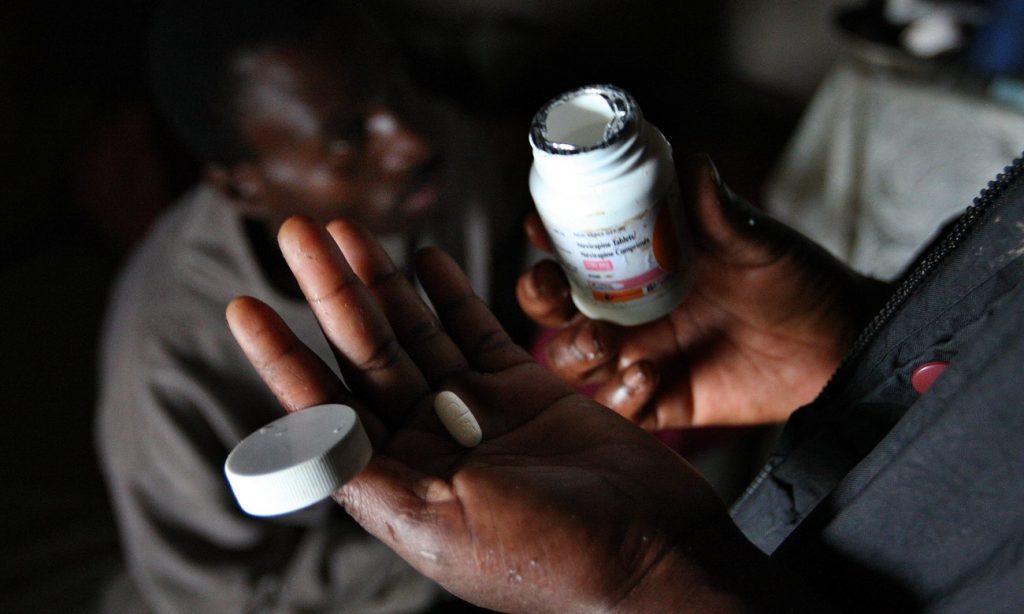
Less than a decade ago, people were warning that Swaziland – a country of about 1.3 million – could be wiped off the map, as HIV cut life expectancy to only 45.9 in 2005.
“Every weekend was a funeral,” says health activist Bekhie Sithole.
“My parents died because of Aids-related illnesses – although it was never really stated or proven,” he says, before delivering a training session on HIV risks in the town of Ezulwini, in western Swaziland.
But a push for prevention, tests and, since 2003, anti-retroviral treatment (ART) has slowed the spread of the virus and raised life expectancy to 49, although Swaziland still has the world’s highest HIV rate, with nearly a third of adults infected.
“Things have really improved. Where you used to see people thinning and dying before us – look. You rarely meet a thin person on the street,” says Sithole.
Widespread testing of pregnant women has led to about 90% of positive mothers being put on treatment to prevent transmission to their unborn babies.
“Ninety-eight or 99% of the women are being tested when they’re pregnant and from there they are easily linked to care,” says Nduduzo Dube, a doctor at the Aids Healthcare Foundation in Manzini, Swaziland’s second city.
ART was first given to people whose viral load was high. But Dube hopes a “test and treat” regime that involves giving anyone who tests positive ARTs for life, regardless of their viral load, will help to end the epidemic.
“This is treatment as prevention … Anyone whose viral load is suppressed, transmission drops by 96%,” he says.
Médecins Sans Frontières (MSF) has been piloting test and treat in two districts. “The figures so far are really promising in terms of viral rate suppression,” says Shona Horter, a qualitative researcher for MSF Swaziland.
About 86% of people offered test and treat have taken it up, she says. “There’s a really strong motivation to … take early treatment so that you don’t get to that point where you’re developing symptoms, becoming unwell and therefore people can see that you’re HIV positive.”
Dube believes that early access to ART is the way forward after a decade of trying to change behaviour barely dented the transmission rate.
“People are not using condoms as much as they are supposed to and people are not stopping or reducing risky behaviour, so [infections] are still continuing.”
“I used to say that it’s a national sport, having sex here, but you can’t talk about it,” quipped a foreign doctor.
Africa’s last absolute monarch, King Mswati III, has 15 wives and picks a new one each year from a parade of of bare-breasted, dancing virgins. He has declined to increase his harem over the past two years in a show of solidarity with his economically struggling populace.

Photograph: Per-Anders Pettersson/Getty
The king has called for zero infections by 2022 and the ministry of health is funding the treatment and prevention programme (pdf). But campaigns calling for abstinence, monogamy and circumcision have been unpopular, and encouraging people – especially men – to be tested and begin ART is a challenge.
Harter says: “We’ve spoken to people who’ve said that still now, in such a generalised epidemic with really high HIV prevalence, they would rather die than be seen on ART.”
Trans-generational sex and violence against women are widespread so promoting condom use is not always helpful. A Unicef report found that a third of women report being sexually abused during childhood (pdf). Polygamous relationships and high unemployment force some women to turn to “blessers” – older, wealthier men who pay their bills and decide – often against – contraception.
Many people, especially men, visit witchdoctors, or inyangas, instead of doctors, which has resulted in clinics trying to reach them in the streets and workplaces.
“It’s looks like a magic bullet but it also depends on how many people test. We wish we could test everyone,” Dube says.
He says it’s hard to reach men, who feel that health centres are a woman’s domain, adding that some men wait for women to get tested so that they can blame them.
In Ezulwini, a lunchtime party is taking place in a car park where people catch buses or visit small shops. People watch make dancers from the sidelines and an MC calls for people to test for HIV in a small tent.
“We generally tag along with any event because they draw people in,” said a health worker above the din of a disco.
Higher risk people are still hard to reach but “there is progress, especially now that people have information that there is ART, that you can have your whole life with ART”, says Sithole.
For a few enlightened boys like 17-year-old orphan Paruka Nkosingiphile, prevention is better than a lifetime of ART. He extols the benefits of circumcision, abstinence and condoms thanks to a local charity called Kwakha Indvodhza (building a man).
“We give thanks to those who try to find a solution like [ART]. But then us, as a new generation, it is our responsibility to keep away from these diseases, so that the coming generation can be free of HIV.”
- Hannah McNeish reported from Swaziland with the help of the International Reporting Project

